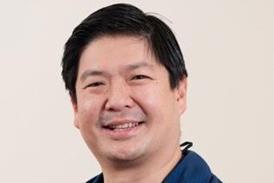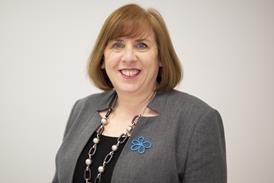The fundamental basis for nursing practice should be the concept of hourly rounding, rather than just another “thing” for nurses to do, says Marie Hutchings.
Get involved
How are new clinical leaders being developed in your organisation? Send in your best practice case studies to be published in Resource Centre by emailing hsjresourcecentre@emap.com with the subject line “developing clinical leaders”. Alternatively, use the comment box to post your top tips and suggestions.
The Roosevelt Scholarship was created a few months after the end of the Second World War by the then Lord Mayor of Nottingham, Francis Carney. He wanted to let the Americans know how much we owed to the leadership of President Roosevelt and urged local businesses to contribute towards his scheme to send four young Nottinghamshire people to America as “unofficial goodwill ambassadors”.
Over 65 years later, and the Nottinghamshire Roosevelt Travelling Scholarship is still going strong. The objective is to send young people to America for a period of three months in order to conduct a work-based project.
Simultaneously, the scholars experience life and culture to help them in their endeavours of contributing more effectively to their place of work and the county of Nottinghamshire.
My own scholarship was in the investigation of hourly rounding - an evidence-based approach to nursing, simply defined as intentionally checking on patients at regular intervals using a structured interaction with key words. The scholarship consisted of 15 different locations in eight different states over a period of 11 weeks.
Challenges in healthcare are not going to cease and nurses will not be presented with a “magical” solution to an ever-changing environment of pain, suffering and healing. It is up to us as nurses to choose excellence and then, to commit to striving for it.
In the US I saw many different ways of initially introducing hourly rounding, but all hospitals conveyed the same message: commitment and energy from the most senior leaders, and this commitment needs to be visible.
In New York I saw hourly rounding written into care pathways; it was a key focus in their patient care manual and contributed to their patient care model. In Austin, I saw it set as a clear expectation in induction sessions and delivered in an emotionally driven “service excellence” session, all with clear links to why it was necessary.
All teaching sessions that I was subject to had a clear emotional basis. Meetings usually included “connect to purpose” stories of nursing excellence or positive patient experience. Generally, hourly rounding was introduced as a “must have”.
Training is one of the most crucial aspects of this change process. I saw hourly rounding taught in a range of ways but all contained focus of why it was an expected behaviour. I learned at an early stage in my study tour that to evoke a change such as the one that is required in hourly rounding, we need values-based teaching.
Values-based teaching induces emotion and calls staff to action. This is more impactful than stories of poor practice, which induces shame and then apathy for change. I observed various successful teaching methods. These were used interchangeably and never in isolation. Further, they were all very simplistic and did not make any assumptions of prior knowledge which, for me, was an essential factor as we often assume staff know how to do something, especially at a senior leadership level.
Essentially, the success of implementation comes from leaders going first in training, sharing personal stories, committing to the process and playing their part consistently. The rationale behind this is credibility; staff will be more likely to open their mind to or adopt change when they know that it is inclusive and important enough for their managers to undertake.
In Baltimore, I met Lyn Ketelsen, co-author of an hourly rounding study published in the American Journal of Nursing. I learned from her vast experience of hourly rounding that to make it a success it needs the full support and ‘buy in’ at corporate team level right through to all the unit managers (ward sisters).
I gained insight to how hourly rounding should be implemented with the use of education, practice and then assessment. I heard of a different type of rounding called leadership rounding on patients and staff. This is a process of validating behaviours of hourly rounding as well as recognising good practice from staff through a system of reward.
I was introduced to the foundations of hourly rounding and learned that it was designed to structure the way nurses interact with their patients by using key words, thereby keeping the patient well informed as well as safe and comfortable.
Leadership rounding on patients (validation of hourly rounding behaviours) was the single most effective way of embedding and sustaining this change process. The quality of this process was the pivotal factor that determined the success of hourly rounding. When leaders were consistent, gave good quality coaching in the maintenance of self-esteem, and immediate public recognition for good hourly rounding practice, the quality of hourly rounding and consistency in care saw improvements.
The benefit of studying the same process in numerous environments showed me the influence of the manager. It was abundantly clear that the opinions of the senior leadership (chief nursing officer) carried through to the managers. The opinions of the managers were then portrayed to staff through coaching and rewarding. It was definitely the manager (ward sister) who held the key to success in the processes of change.
I saw best practice in areas with highly-visible leaders, showing nurses why hourly rounding should be done. In these areas, nurses appeared to know that they could make a difference, which I believe engaged them in the process for change.
Hourly rounding should not be another “thing” for nurses to do; rather, it should be the fundamental basis for nursing practice. A key part of hourly rounding is doing nursing interventions, so looking at what will need doing in the hour ahead and doing it at the rounding time. More organisation, planning and ultimately less chaos for the nurse in the long run should lead to improved job satisfaction and a stable workforce.


























No comments yet